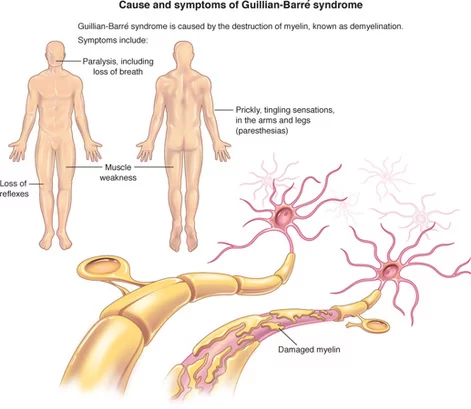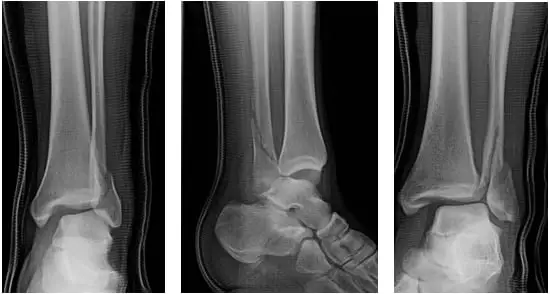Scleroderma
What is a Scleroderma?
Scleroderma is an autoimmune disease that causes inflammation and fibrosis (thickening) of the skin and other body tissues. When the immune system misunderstands tissues as wounded, inflammation occurs, and the body produces too much collagen, resulting in scleroderma. Too much collagen in your skin and other tissues leads to tight, rigid skin. Scleroderma may affect multiple systems in your body.
Scleroderma is divided into two major types:
- The skin and the tissues under it are the only areas affected by localized scleroderma.
- Scleroderma cannot be cured. The goal of treatment is to relieve symptoms while also stopping the disease’s progression.
What happens with scleroderma?
The cause of scleroderma is unsure. Researchers believe that the immune system overreacts, resulting in inflammation and harm to the cells that coat blood arteries. This causes connective tissue cells, particularly fibroblasts, to produce excess collagen and other proteins.
Certain scleroderma signs and symptoms arise from the collagen that builds up in the skin and other organs as a result of fibroblasts living longer than usual. Damage to blood vessels is also possible.
Who gets Scleroderma?
Scleroderma can affect everyone, however certain populations are more likely to get the condition. The following things might affect your risk.
- Sex. Scleroderma is more dominant in women than in men.
- Age. The condition typically arises between the ages of 30 and 50, and it is more general in adults than in children.
- Race. Scleroderma can affect persons of all races, but it is most severe in African Americans. For instance, the condition is more general among African Americans than in European Americans.
- African Americans are more prone to suffer skin involvement and lung disease than other populations.
Types of Scleroderma
Scleroderma that is localized affects the skin and underlying tissues. Localized scleroderma is more frequent in youngsters, however, it can also be present in adults. It typically appears in one or both of the following patterns:
- Morphea are scleroderma patches that can be half an inch or greater in diameter.
- Linear scleroderma is characterized by scleroderma thickening along a line. This commonly extends down an arm or leg, although it can also flow down the forehead and face.
Systemic scleroderma, also known as systemic sclerosis, affects the skin, tissues, blood vessels, and vital organs. Doctors typically classify systemic scleroderma into two kinds based on the degree of skin involvement:
- Reduced cutaneous scleroderma affects the skin on your hands, fingers, face, lower arms, and legs below the knees. It progresses gradually.
- Diffuse cutaneous scleroderma develops more quickly and begins in the fingers and toes, but eventually spreads to the upper arms, the upper body, or thighs. This variety typically has more internal organ damage.
Cause of scleroderma
Unknown is the specific cause of scleroderma. Nonetheless, experts think some variables could be at play, such as:
- Immune system malfunction: The overproduction of collagen, a protein that produces scar tissue, and inflammation are caused by the immune system incorrectly attacking healthy tissues in scleroderma patients.
- Genetics: Scleroderma can occasionally run in families, indicating a potential hereditary connection. For the majority of those who have the disease, however, this is not the case.
- Environmental factors: Scleroderma risk may be elevated by exposure to specific environmental triggers, such as solvents or certain chemicals.
- Hormonal factors: Women are more likely than men to develop scleroderma, which indicates that hormones may be involved.
Symptoms of Scleroderma
The body can experience symptoms in multiple areas. Among them are:
- Smooth, shiny skin that has thickened or hardened. It usually appears on your face and hands.
- The Raynaud Effect
- Lesions or ulcers on your fingers
- Tiny red pimples on your breast and face
- Firmly formed, oval-shaped cutaneous lesions
- Difficulty swallowing
- Pain or enlarged joints
- Weakened muscles
- Sandpaper lips or eyes (Sjogren’s syndrome)
- Edema, or swelling, primarily in the hands and fingers
- Breathlessness
- Bloating and cramps in the belly
- Heartburn
- The diarrhoea
- Loss of weight without a known reason
Depending on the type of scleroderma you have, different people experience different symptoms.
Patches of thick, hard skin are usually caused by one of two forms of localized scleroderma.
Patches of skin that have morphea become stiff, oval-shaped, and thicker. These patches could appear yellow and waxy, with a reddish or bruise-like border surrounding them. The patches could remain in one spot on the skin or move to other places. Over time, the condition normally becomes inactive, but darker skin patches could continue to appear. Some folks experience weariness as well.
Your arm, leg, and, in rare cases, your forehead will have thickened or discolored skin lines due to linear scleroderma.
Systemic sclerosis, another name for systemic scleroderma, can affect your inside organs in addition to your skin. It can develop suddenly or gradually. Fatigue is a common symptom of this kind of scleroderma.
Usually affecting the skin on your fingers, hands, face, lower arms, and legs below the knees, limited cutaneous scleroderma develops gradually. It frequently results in issues with your esophagus and blood vessels. While significant internal organ involvement, such as progressive lung disease or renal disease, is less common in the confined form than in the diffuse type, it is often milder.
Diffuse cutaneous scleroderma usually shows as a sharp thickening of the skin on your fingers or toes. The thickening of your skin then extends to the areas of your body above the knees and/or elbows. Anywhere throughout your digestive tract is one of the internal organs that could be harmed by this type.
- Your respiratory system.
- Your kidneys.
- In your heart.
- Reasons behind Scleroderma
Although the specific causation of scleroderma is unknown, researchers believe that some variables may be involved:
- Genetic composition. Certain people’s exposure to scleroderma and the type of scleroderma they have can be affected by their genetic makeup. Unlike certain hereditary disorders, this one cannot be inherited and is not inherited from parent to kid. On the other hand, compared to the general population, first-degree relatives of scleroderma patients have an increased risk of developing the disease.
- Surroundings. Scleroderma may be caused by exposure to certain environmental factors, such as toxins, according to research.
- Hormones. The majority of scleroderma kinds affect women more frequently than males. Researchers believe that the condition may be affected by hormonal or immunological variations between men and women.
- Immune system modifications. Your body’s abnormal immunological or inflammatory response sets up cellular alterations that result in excessive collagen formation. Scleroderma can occasionally be caused by an immunological response to growing cancer cells.
The diagnosis of Scleroderma
Scleroderma diagnosis is typically made as a component of a differential diagnosis. This means that before ruling out other illnesses and making the diagnosis of scleroderma, your doctor will likely do a few tests to find out what’s causing your symptoms. Among the tests you could require are:
- Blood tests to evaluate the effectiveness of your immune system.
- Tests of your pulmonary function can reveal any issues with your respiratory system or lungs.
- To get a sample of your affected skin or other tissue for laboratory examination, undergo a biopsy.
- If you have gastrointestinal (GI) problems, you may need an endoscopy, which involves using a tiny camera related to a long, thin tube to see inside your stomach or throat.
Along with a physical examination, your doctor will inquire about your medical history. They could request the following tests:
- Imaging examinations like CT scans and X-rays
- Blood examinations
- Tests related to the stomach
- Tests of lung function
- Echocardiograms and EKGs are examples of heart tests.
A few imaging tests, such as the following, are likely also necessary to obtain images of the inside of your body:
- ECG, or electrocardiogram.
- Echocardiography, or “Echo”
- A radiograph of the chest.
- A CT scan, or computed tomography.
Additionally, a biopsy—a little sample of skin—may be taken and examined under a microscope by a specialist.
Scleroderma is diagnosed by a medical professional by physical examination and several tests.
It may be necessary for you to see a rheumatologist, a medical professional who treats autoimmune diseases. They’ll interview you about your symptoms and perform a physical examination. Inform your healthcare practitioner about the symptoms you’re having, when you first noticed them, and whether anything seems to be aggravating them.
A few tests will also be necessary to rule out other illnesses that could be causing your symptoms.
Treatment
Scleroderma has no known cure, but your doctor can help you develop a treatment plan that regulates your symptoms and reduces their interference with your regular activities.
The location and intensity of your symptoms will determine the treatments you require. Typical scleroderma therapies include:
Medical treatment
- Skin treatments: To keep your skin from drying out, you may need to use moisturizers and lotions.
- Immunosuppressants: Immunosuppressants prevent the body’s protection from destroying healthy tissues and cells.
- Vasodilators: These aid in blood vessel relaxation and enlargement, which may improve blood flow and lessen symptoms such as Raynaud’s phenomenon. Sildenafil and calcium channel blockers are two examples.
- Corticosteroids: Used to treat inflammation, discomfort, and stiffness in the skin and joints; can be taken orally, topically, or intravenously. However, they are usually used sparingly and for short periods because prolonged usage may have negative effects.
- Painkillers: Acetaminophen and ibuprofen are two over-the-counter medications that can aid with general pain and discomfort management.
- Other drugs: Drugs for heartburn, antifibrosis, and digestive problems are examples of drugs that may be used to treat particular symptoms, depending on the situation.
- medications to treat particular symptoms: For instance, you may require medication to control kidney failure, lower blood pressure, improve breathing, or ease gastrointestinal problems.
- Bright, concentrated UV radiation is used in light treatment, also known as phototherapy, to treat skin diseases. Thickened skin may be treated using it.
- Transplants of stem cells: Individuals with severe symptoms may require a stem cell transplant. Your body can replace damaged blood cells with healthy donor cells with the aid of a stem cell transplant.
Therapies
- Physical therapy: You can improve the way your body moves with the assistance of a physical therapist. Assists in managing muscular weakness, preserving joint flexibility, and improving range of motion. Exercises are customized based on each person’s needs and capabilities.
- Occupational therapy: teaches strategies and makes use of assistive technology to help people become more independent and take care of themselves.
- Speech therapy: This may be helpful for those with scleroderma who have trouble swallowing or who have changed in voice.
Additional Management Techniques:
- Maintaining a healthy lifestyle: Keeping up a healthy lifestyle can greatly enhance well-being and possibly enhance the effectiveness of treatment. A balanced diet, frequent exercise (as tolerated), and stress management are all important components of this.
- Supportive care: Counselling and emotional support can help you deal with the difficulties of having a chronic disease.
- Patient participation and education: Individuals are empowered to properly manage their health when they are aware of the disease and actively participate in treatment decisions.
Emerging Therapies:
Current investigations are looking into novel and potential treatments, such as:
- Drug treatments that specifically target molecules involved in the pathophysiology of the disease.
- Using stem cells, stem cell therapy aims to restore or repair damaged tissues.
- Gene therapy: alters genes to address the disease’s underlying cause.
Self-care
Living with the autoimmune disease scleroderma requires a multimodal approach to symptom management and overall health maintenance. Although there isn’t a single treatment, you may significantly improve your quality of life by implementing different self-care techniques:
Skin Maintenance:
- Apply moisturizers without fragrances frequently to avoid dryness and cracking, especially after showering or washing your hands.
- Keep your skin safe: Every day, apply sunscreen with an SPF of 30 or higher to exposed areas to protect them from UV radiation.
- Avoid strong chemicals and soaps: Use mild cleansers instead of harsh ones that can hurt your skin.
- Maintain appropriate hand and foot care: To avoid Raynaud’s phenomenon, moisturize your hands and feet regularly, wear comfortable shoes, and keep them warm in cold weather.
Physical therapy and exercise:
- Exercise on a regular basis: Even modest amounts of physical activity, such as walking or light stretching, can contribute to the maintenance of muscular strength, joint flexibility, and general well-being. But pay attention to your body and don’t push yourself too much.
- Physical therapy: Follow your healthcare provider’s recommendations and attend physical therapy sessions. These sessions can assist you in creating customized workout plans to help you better operate daily, reduce pain and stiffness, and increase your range of motion.
Handling Stress:
Make relaxation methods a priority. Stress management strategies, such as yoga, meditation, deep breathing exercises, and mindfulness practices, can aggravate the symptoms of scleroderma.
Seek out emotional assistance: Talk about your worries and difficulties with friends, family, and a therapist. Participating in scleroderma support groups can also help people make meaningful connections and exchange experiences.
Healthy Lifestyle:
- Balanced diet: To give your body the vital nutrients it needs, keep a diet full of fruits, vegetables, whole grains, and lean protein sources.
- Hydration: To stay hydrated and promote general health, sip lots of water throughout the day.
- Good sleep: To help your body relax and heal itself, try to get enough sleep every night.
- Keep a healthy weight: Living obese or overweight might aggravate some scleroderma symptoms and put more strain on your body. See your physician or a certified dietician for advice on how to keep your weight in check.
Diet for Scleroderma
While there isn’t a single diet that has been shown to cure or treat scleroderma, dietary decisions can help manage symptoms and enhance general well-being:
Overall Suggestions:
- Nutritious and well-balanced: Aim for a diet high in whole grains, fruits, vegetables, lean protein sources, and whole grains. This promotes the body’s natural healing processes and offers vital nutrients for general health.
- Hydration: Throughout the day, sip lots of water to be well hydrated. Digestion, circulation, and general health are all aided by this.
- Portion control: To prevent overeating and maintain a healthy weight, practice mindful eating and stick to recommended slice sizes.
Specific Considerations:
- Consume foods high in antioxidants, such as whole grains, nuts, fruits, and vegetables. These could promote tissue health and lessen inflammation.
- Omega-3 fatty acids: To get your recommended daily allowance of omega-3 fatty acids, try include walnuts and flaxseeds, as well as fatty seafood like tuna, salmon, and sardines. These might help maintain joint health and have anti-inflammatory qualities.
- Calcium and vitamin D: Make sure you are getting enough calcium and vitamin D, which are important for healthy bones. This is especially important if you have joint discomfort or are at risk of developing osteoporosis. These nutrients can be found in dairy products, leafy greens, fortified foods, and solar exposure (as long as it’s done with appropriate protection).
- Fibre: Eat enough fiber-rich fruits, vegetables, and whole grains to support a healthy digestive system and avoid constipation—a typical complication of scleroderma.
Additional Advice:
- Control salt intake: To prevent high blood pressure, which can be an issue for some people with scleroderma, cut less on processed foods, added salt, and salty sauces.
- Control sugar intake: To keep blood sugar levels in a healthy range and to promote general well-being, cut back on sugary drinks and processed meals.
Complications of Scleroderma
Raynaud’s syndrome and Sjögren’s syndrome are two other disorders that are significantly more common in people with scleroderma.
The small blood arteries in your fingers and toes—your digits—are impacted by Reynaud’s syndrome. Individuals who have it experience symptomatic periods, sometimes known as attacks. Your fingers’ blood vessels suddenly constrict more than they should because of it. Your affected numbers’ skin may become paler or lighter than usual as a result of this. They may appear blue as well.
Sjögren’s syndrome causes your body to produce less moisture in specific glands, most commonly the glands in your eyes and mouth that produce tears and saliva. Joint and muscle discomfort are also experienced by certain Sjögren’s syndrome patients.
Your chance of complications can be reduced with treatment, and these could include:
Serious side effects from certain scleroderma kinds include:
- Renal failure.
- High blood pressure in the arteries that provide blood to the lungs from the heart is known as pulmonary hypertension.
- Pulmonary fibrosis, or lung tissue scarring.
- Heart and blood vessel problems are referred to as cardiovascular disease.
- Heart failure with congestive heart failure.
- A compromised defense mechanism (immunodeficiency).
- Conditions affecting the way your body breaks down food and absorbs nutrients are known as digestive tract diseases.
- Cancer.
- Elevated blood pressure within the lungs
- Your lungs’ scar tissue
- Blood flow reduction in your fingers and toes
- Infection and inflammation of muscles
- Renal failure
Risk factors for Scleroderma
Scleroderma can affect everybody, although some people are more sensitive than others:
- Scleroderma is four times more common in individuals appointed female at birth (AFAB) than in individuals designated male at birth (AMAB).
- People with scleroderma who are between the ages of 30 and 50 are the most common.
- Black persons have a higher risk of developing scleroderma, tend to have it earlier in life, and are more likely to suffer lung-related symptoms. They frequently have more severe skin complaints as well.
Precaution
While scleroderma is an autoimmune disease that cannot be fully prevented, some steps can be taken to lessen the likelihood of problems and enhance overall health:
- Sun Protection
- Sunscreen: Always cover exposed skin areas with a broad-spectrum sunscreen with an SPF of 30 or higher.
- Sun protection apparel: When you’re outside, especially during the most burning parts of the day, wear clothing that blocks the sun, such as long sleeves, slacks, and caps.
- Look for shade: To escape the direct sun, look for shade or cover yourself with an umbrella whenever you can.
- Control your stress:
Techniques for managing stress: To effectively manage stress, practice relaxation practices such as yoga, meditation, or deep breathing. Severe stress may aggravate the symptoms of scleroderma.
Healthy lifestyle:
- Keep a diet rich in fruits, vegetables, whole grains, lean protein sources, and well-balanced whole grains. This provides vital nutrients while promoting overall wellness.
- Frequent exercise: To improve circulation, preserve muscle strength, and lessen fatigue, engage in moderate-intensity exercise frequently. But pay attention to your body and don’t push yourself too much.
- Keep a healthy weight: Being obese or overweight might aggravate some scleroderma symptoms and put more strain on your body. Achieve a healthy weight with a balanced diet and regular exercise.
- Avoid tobacco and secondhand smoke:
- Giving up smoking: Giving up smoking has a major positive impact on general health and lowers the chance of scleroderma-related problems.
- stay away from secondhand smoke: Being around smokers might also expose you to secondhand smoke, which can be dangerous.
Maintain good hand and foot care:
- Hands and feet should be moisturized frequently to avoid drying out and cracking, which can result in infections.
- Warm clothes and socks: To avoid Raynaud’s phenomenon, which causes fingers and toes to turn white or blue when exposed to cold, wear warm clothes and socks during the winter.
- Appropriate footwear: To safeguard your feet and avoid injuries, put on shoes that fit well.
- Continual examinations and dialogue with your physician:
Plan routine examinations: Make sure you see your doctor on a frequent basis so that they can check on you, address any issues, and modify your treatment plan as necessary.
- Remain knowledgeable:
Reliable sources: Learn about scleroderma and how to manage it by consulting reputable resources such as the Scleroderma Research Foundation and the National Scleroderma Foundation.
Complication
Skin and Tissue Connectivity:
- Skin thickening and hardening: Scleroderma is characterized by thickening and hardening of the skin, which can cause stiffness, decreased flexibility, and trouble performing daily tasks.
- Ulcers: Due to weakened skin and insufficient blood flow, open ulcers can appear on the hands, fingers, and fingertips.
- Contractures: Joint stiffness and tightness can result in contractures, which restrict the range of motion and flexibility.
Blood Channels:
- Raynaud’s phenomenon: This disorder is caused by restricted blood vessels, which cause fingers and toes to turn white or blue, feel numb, and tingle when exposed to cold or stress.
- Open sores known as “digital ulcers” can appear on the fingers and toes as a result of reduced blood flow caused by Raynaud’s phenomenon.
Lungs:
- Interstitial lung disease (ILD): Exhaustion, coughing, and breathing problems can result from lung tissue scarring and thickening.
- A severe variant of ILD that results in extensive lung scarring and breathing difficulties is pulmonary fibrosis.
Heart:
- Breathlessness and pain in the chest are symptoms of pericarditis, an inflammation of the sac that surrounds the heart.
- Myocarditis: An inflammation of the heart muscle that can cause exhaustion, dyspnea, and irregular heartbeat.
Kidneys:
- Scleroderma renal crisis: A potentially fatal condition known as scleroderma renal crisis is typified by an abrupt onset of hypertension, kidney failure, and bodily fluid accumulation.
- Damage to the kidneys caused by Scleroderma can eventually result in excessive blood pressure and urine containing protein.
The digestive system
- Heartburn, chest pain, and difficulty swallowing are symptoms of gastroesophageal reflux disease (GERD), which is caused by weak lower esophageal muscles.
- Problems with the motility of the gastrointestinal tract (GI): Constipation, bloating, and pain in the abdomen can result from food moving through the digestive system more slowly.
Prognosis
Scleroderma patients’ prognosis, or long-term outlook, is difficult to predict because it depends on a variety of conditions, such as:
Scleroderma type:
- Skin-related limited cutaneous scleroderma: This kind often has a better prognosis, with a 90% 5-year survival rate. Long-term issues, however, can still develop and lower quality of life.
- Diffuse cutaneous scleroderma: This kind affects the skin as well as internal organs and has an 80% 5-year survival rate. Its prognosis is more cautious. The impact of certain organs, particularly the kidneys and lungs, on life expectancy is significant.
Disease Intensity:
A major factor is the degree of skin and organ involvement. Those who have milder symptoms typically have a more optimistic prognosis than those who exhibit more involvement.
Individual Elements
The prognosis is additionally affected by therapy response, age at diagnosis, and general health. A better long-term outcome can be achieved with early diagnosis and efficient treatment.
It is important to understand:
- Quality of life is not determined by prognosis: Although prognosis is primarily concerned with survival rates, it is not a direct indicator of an individual’s quality of life. Regardless of the type or prognosis, many people with scleroderma can lead happy lives when their condition is properly managed and supported.
- Improvements in medical care: Future prognoses may be improved and illness management may become more effective thanks to ongoing research and the creation of new therapeutic options.
Conclusion
People who have scleroderma, an autoimmune disease that causes hardening of the skin and connective tissue, have many difficulties. Despite the lack of a cure, there is hope for better illness control and an improved standard of life because of continuous research and management initiatives.
Towards the Future:
- Precision medicine: There is great potential for personalized treatment plans based on unique genetic and disease qualities.
- Research in progress: Future advancements and improved illness control are possible with ongoing study and the creation of novel therapy alternatives.
- Living with scleroderma: Keeping up with developments, finding support networks, and adopting an optimistic mindset can all greatly improve well-being and quality of life.
FAQs
What is scleroderma’s primary cause?
One kind of autoimmune disease is scleroderma. The immune system misattacks and damages healthy body tissue in this situation. There is no recognized cause of scleroderma. The buildup of a substance called collagen in the skin and other organs is what causes the symptoms of the condition.
How long will a person with scleroderma live?
Patients with minimal scleroderma typically live normal lives. Some get severe Raynaud’s and musculoskeletal pain; a small percentage may experience potentially fatal pulmonary hypertension; and still others have GI tract issues, including heartburn.
What is scleroderma’s terminal stage?
The inability to conduct daily physical activity, a chronic cough, and shortness of breath are common symptoms of this type of scleroderma. Pulmonary fibrosis and/or pulmonary hypertension are frequent side effects of end-stage scleroderma that can be fatal.
What age is the onset of scleroderma?
Scleroderma, both localized and systemic, affects women more frequently than males. Although either type of illness can strike anyone at any age, systemic scleroderma is often diagnosed in adults between the ages of 20 and 50, with pediatric cases occurring very infrequently. The disease scleroderma cannot be cured.
Is scleroderma a dangerous condition?
While this type of scleroderma can strike anyone at any age, fertile women are most likely to experience it. There are an estimated 125,000 active cases in the United States and maybe 2.5 million worldwide. It affects about 30 persons per million people annually. Out of all the rheumatologic illnesses, it is the most deadly.
What is the most effective scleroderma treatment?
When started at an early age, immunomodulatory medications such as methotrexate and cyclosporine, as well as phototherapy (light therapy), can help reduce the severity of scleroderma. One benefit of seeing a physical therapist is that: When thickened skin covers a joint, such as the wrist, finger, or jaw, maintain your range of motion in that joint.
When did you first notice symptoms of scleroderma?
Early signs and symptoms could include itching and swelling. Because of the tightness, the affected skin may appear lighter or deeper in color and may seem glossy. Additionally, some people get little red spots on their hands and faces known as telangiectasia.
Can someone with scleroderma lead a full life?
Although many scleroderma patients lead long, fulfilling lives, the disease can raise a person’s risk of death by up to eight times for diffuse disease and twice for localized disease. Two risk factors for a worse prognosis include widespread skin disease and pulmonary hypertension. But the prognosis for this sickness appears to be getting better over time.
Do people with scleroderma appear younger?
As a result, SSc patients had considerably less severe wrinkles, roughness, and pores than control subjects. Wrinkles among them had a stronger relationship with the skin thickness score. Therefore, wrinkles may be directly impacted by the increased collagen in scleroderma skin.
How might scleroderma be avoided?
While there is no known cure for scleroderma, there are precautions you can take to lessen your risk of infection. Pneumonia (pneumococcal) vaccine is something your doctor might advise.
References
- Professional, C. C. M. (n.d.). Scleroderma. Cleveland Clinic. https://my.clevelandclinic.org/health/diseases/scleroderma
- Scleroderma. (2005, February 3). WebMD. https://www.webmd.com/skin-problems-and-treatments/scleroderma
- Branch, N. S. C. A. O. (2023, December 15). Scleroderma. National Institute of Arthritis and Musculoskeletal and Skin Diseases. https://www.niams.nih.gov/health-topics/scleroderma#:~:text=Overview%20of%20Scleroderma,much%20collagen%2C%20leading%20to%20scleroderma.
- Professional, C. C. M. (n.d.). Scleroderma. Cleveland Clinic. https://my.clevelandclinic.org/health/diseases/scleroderma







